Research
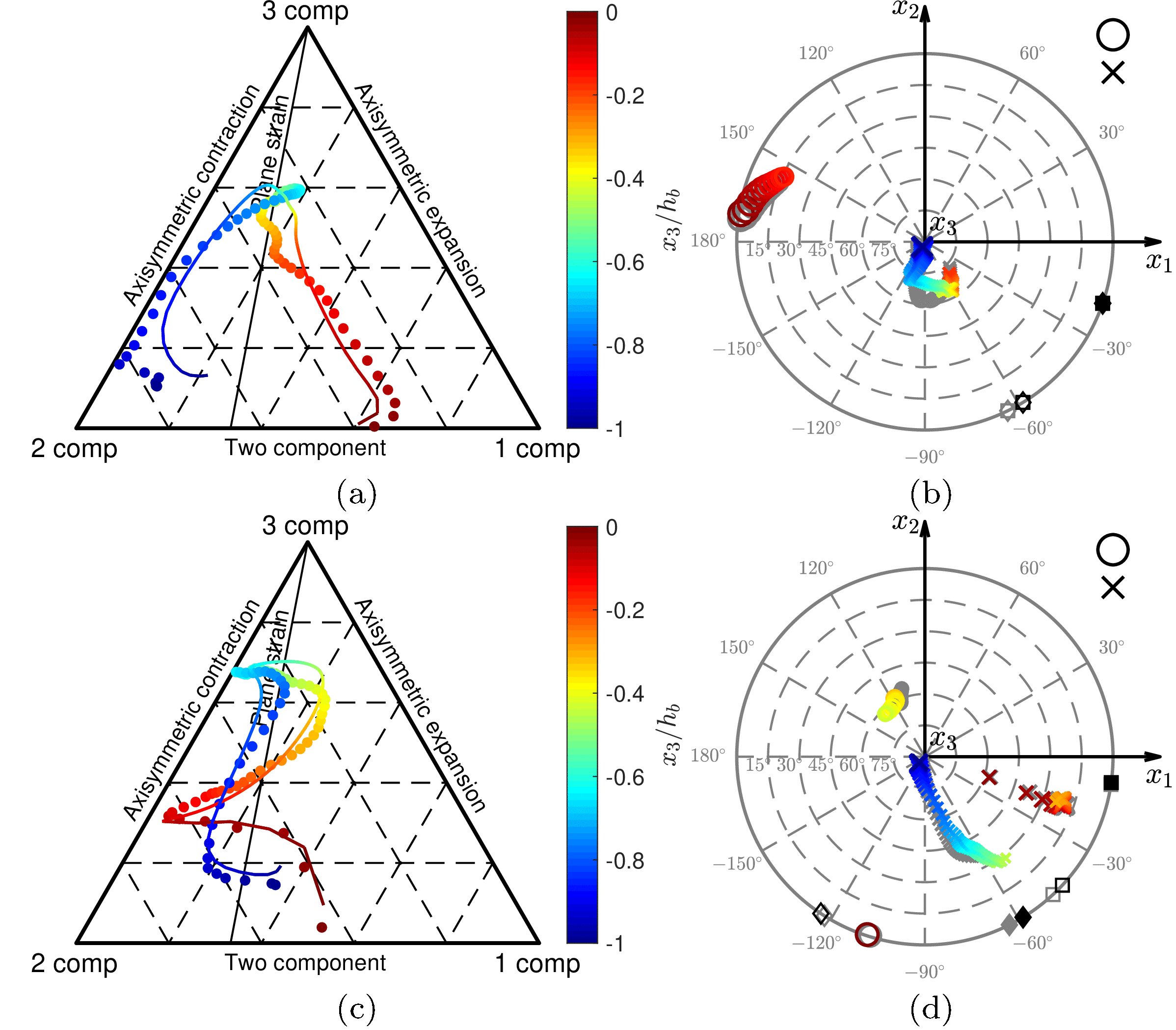
Langmuir turbulence
Langmuir turbulence results from the interaction between the ocean surface waves and the Eulerian currents and background turbulence. See this video for an example of Langmuir turbulence seen at the sea surface. It strongly affects the turbulent mixing in the ocean surface boundary layer (OSBL), and therefore the air-sea fluxes of heat, momentum and trace gases, as well as the transport and dispersion of pollutants, nutrients and other tracers. I study the physics of Langmuir turbulence using large eddy simulations (LES) of the wave phase averaged Boussinesq equations. Here is a movie of the simulated Langmuir turbulence in LES. My research on Langmuir turbulence has been focusing on its distinctive structure from shear and convective turbulence and its effect on the entrainment at the base of the OSBL. This figure is a comparison of the anisotropy between shear turbulence (top panels) and Langmuir turbulence (bottom panels). See more in papers [6] and [11]. I’m also interested in its interactions with other processes such as submesoscale fronts and eddies.
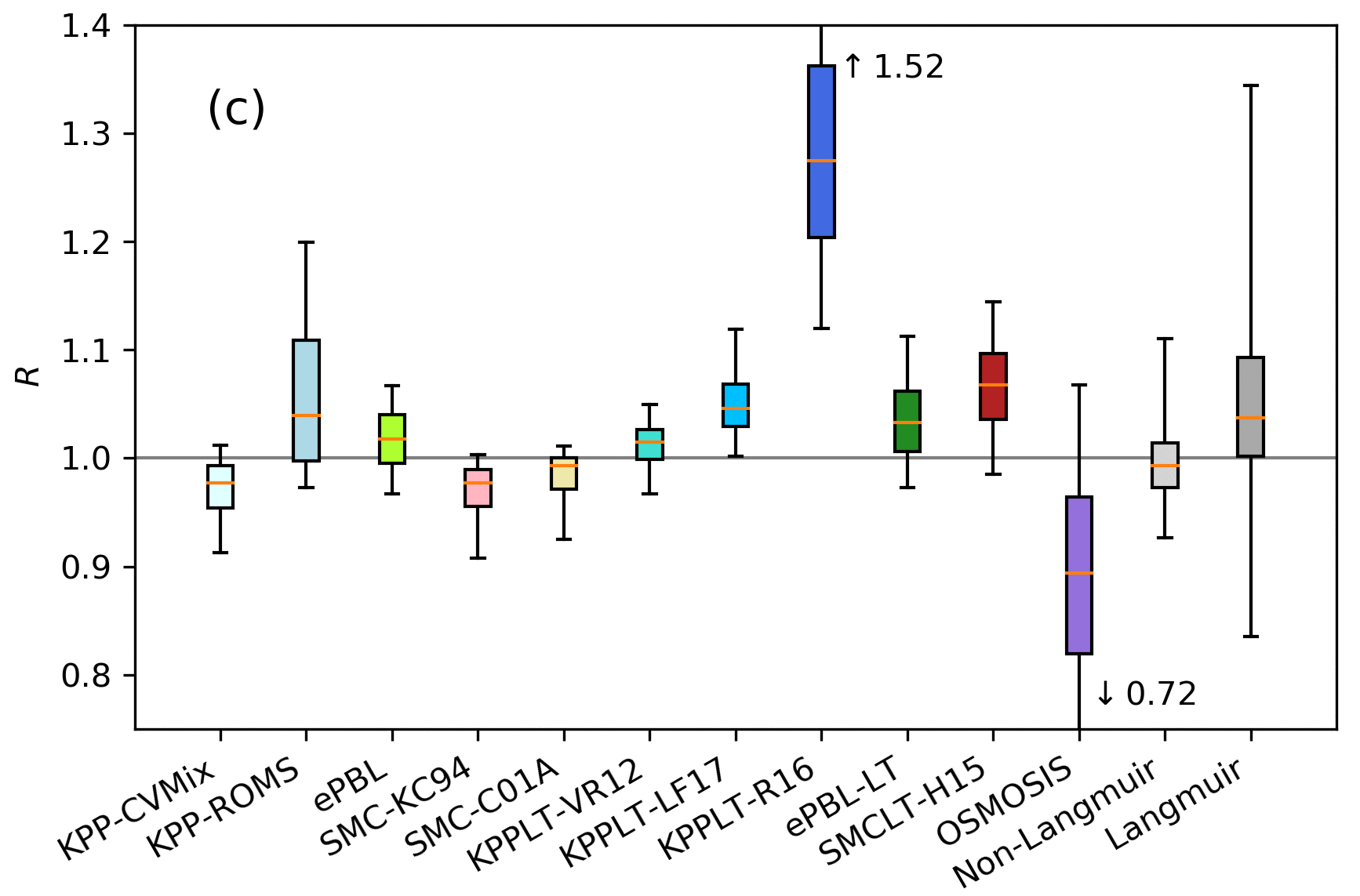
Modeling the OSBL turbulence in climate models
Small scale physical processes such as ocean surface boundary layer (OSBL) turbulence are not resolved in climate models, at least not until the end of this century (see Figure 1 of this paper for how this is estimated). However, their effects on the global climate are significant. I develop physically-based parameterizations to represent the effects of such small scale physical processes in climate models. This figure shows a comparison between 11 OSBL turbulence parameterizations with and without Langmuir turbulence, of which I have contributed three (KPPLT-VR12, KPPLT-LF17 and ePBL-LT). See more in paper [9]. Many of these parameterizations have been implemented in the Community Ocean Vertical Mixing Project (CVMix) and the General Ocean Turbulence Model (GOTM), which are libraries that can be easily used in many ocean models. CVMix is now integrated into GOTM, which provides a consistent framework for working with these parameterizations. See more in paper [13].
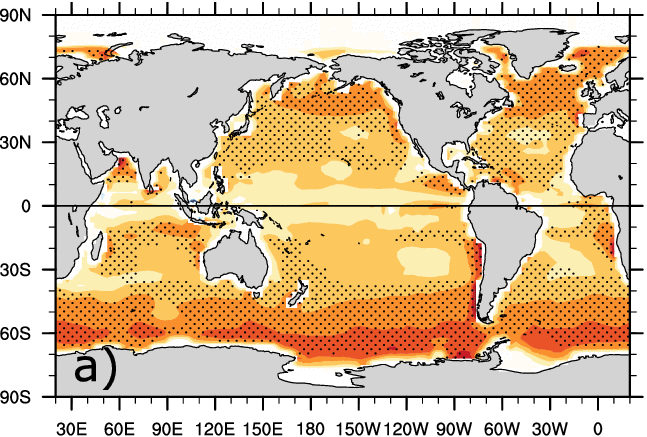
Impact of ocean surface waves on regional and global climate
Ocean surface waves affect the air-sea fluxes of heat, momentum and gases, thereby the regional and global climate, but are missing in most of the CMIP5 climate models. A major part of my PhD work focused on assessing the impact of ocean surface waves on global climate, in particular the effect of Langmuir turbulence. I coupled a global climate model (NCAR’s CESM) with an ocean surface wave model (NOAA’s WAVEWATCH III) for this purpose. I also developed a computationally efficient statistical wave model for Langmuir turbulence parameterizations to avoid the significant computational cost of WAVEWATCH III. See more in papers [4] and [5]. In addition to Langmuir turbulence, ocean surface waves also affect the regional and global climate through wave breaking, wave-current interactions and wave-sea ice interactions etc. A coupled ocean surface wave component in climate models also allows us to account for such effects.
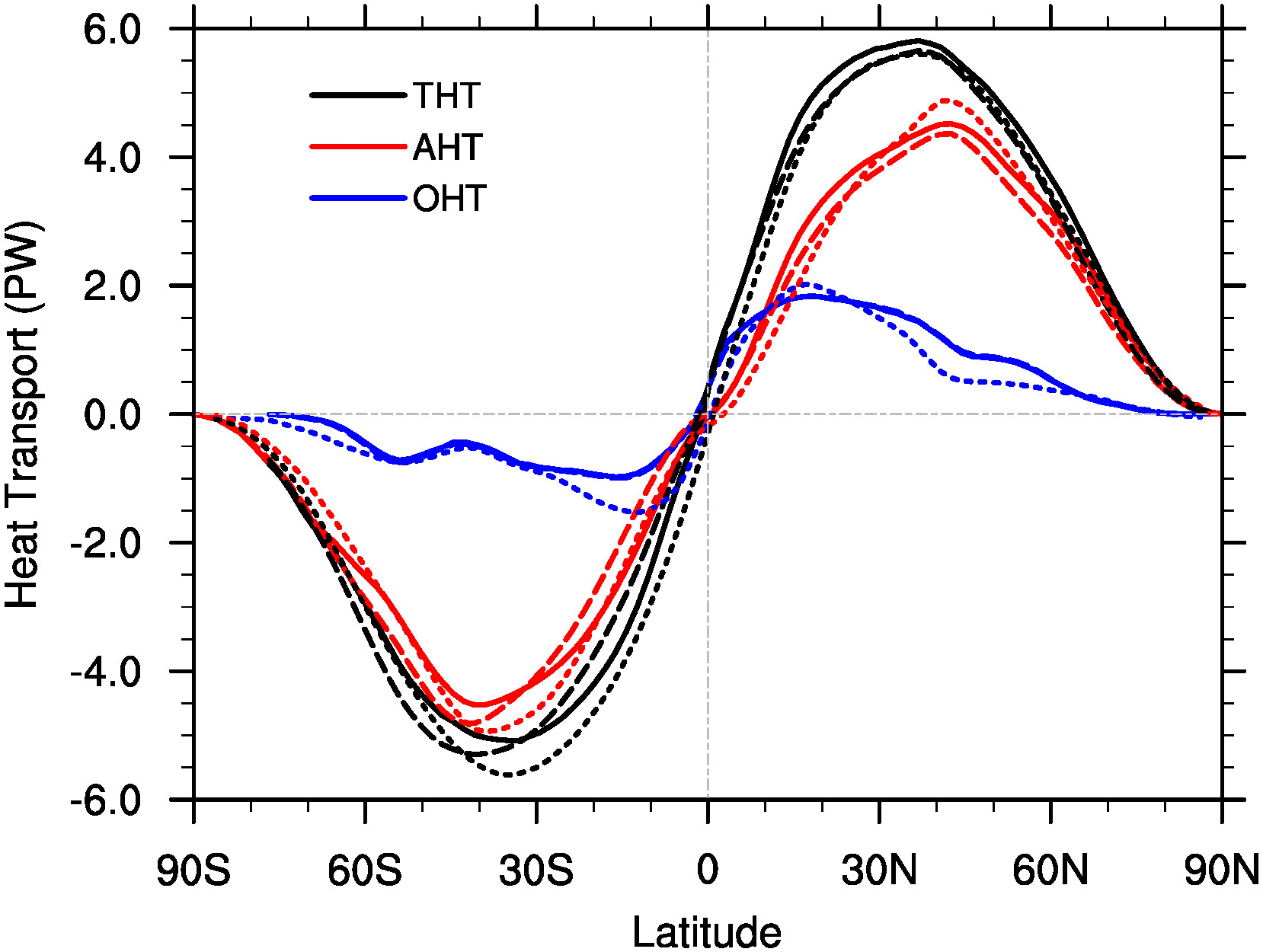
Energy budget in the climate system and climate variability
The poleward transport of the excessive solar energy absorbed at low latitudes in the atmosphere and the ocean largely determines the regional and global climate variability, which strongly shapes our social and economical activities. For my master’s degree, I worked on decomposing the meridional heat transport in the climate system, and using climate models to understand the climate variability over the past 22,000 years from the energetic perspective. See more in papers [1], [2] and [3].
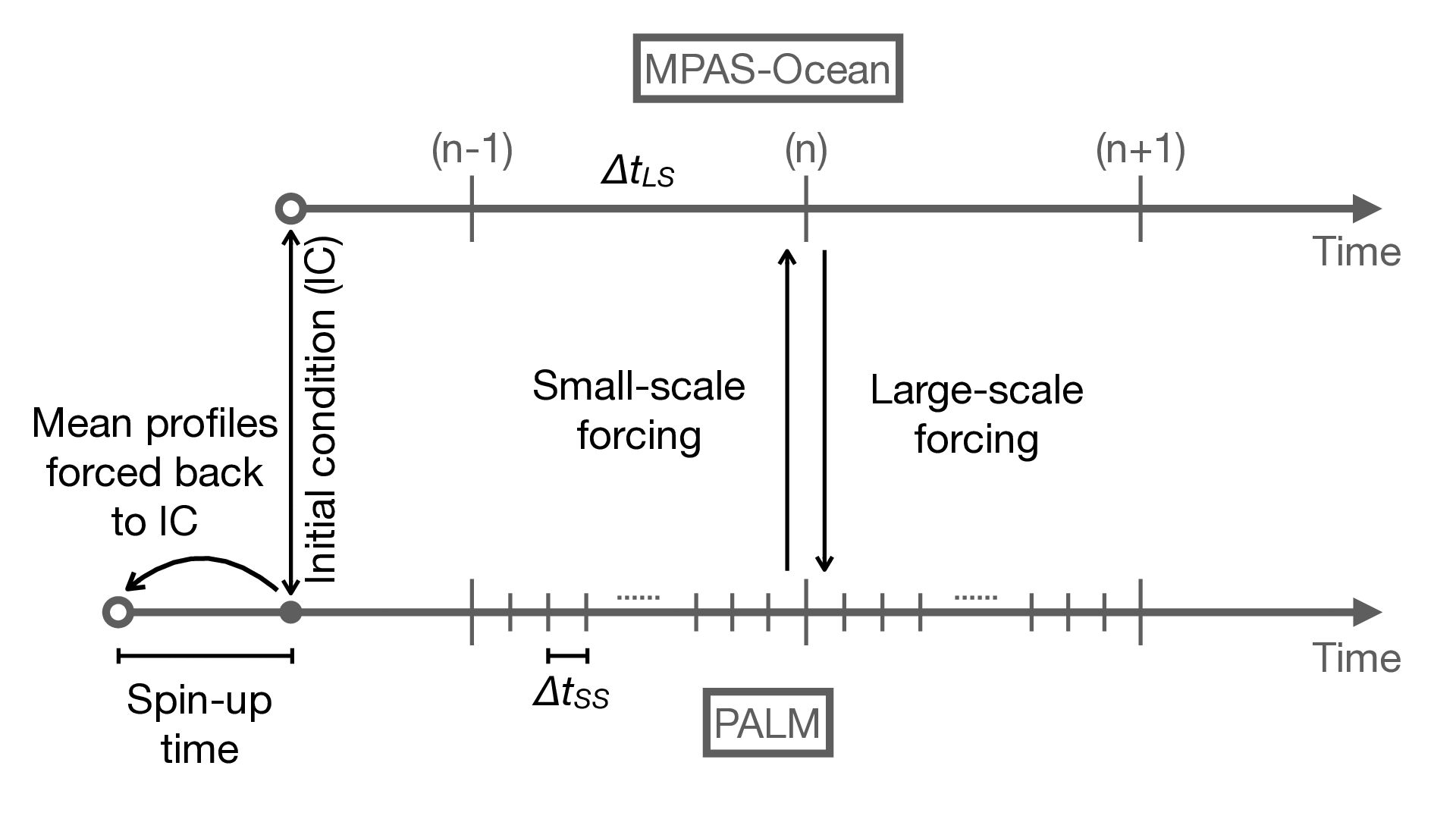
Multiscale modeling
Ocean circulations are governed by processes ranging from planetary-scale forcing to microscale dissipation and mixing. Simulations that resolve all the important processes across multiple scales are desirable but extremely computationally expensive. The multiscale modeling approach intends to solve distinct sets of equations for the dynamics at different scales. At LANL, I’ve been developing a multiscale modeling approach by coupling a large eddy simulation model (PALM) with an ocean general circulation model (MPAS-Ocean). The goal is to extend the multiscale modeling capability of MPAS-Ocean to include the boundary layer turbulence, thus to better understand the interactions between the boundary layer turbulent mixing and larger scale processes with a loose but flexible coupling strategy. See more in paper [12].
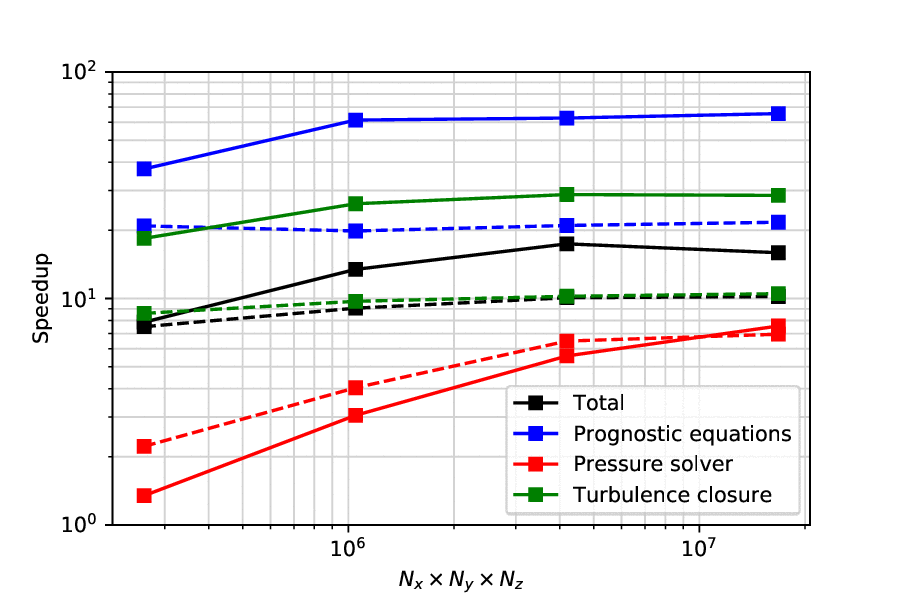
GPU accelerated computing
General-purpose graphics processing units (GPUs) have rapidly evolved to become high performance accelerators for modern supercomputers. I have been working on accelerating the large eddy simulations (LES) using GPUs. I have ported a customized version of PALM on GPU using OpenACC, a directive-based and performance-portable parallel programming model, and cuFFT, the NVIDIA CUDA Fast Fourier Transform library. Preliminary results with a single GPU show more than 10 times overall speedup versus using a single CPU, limited primarily by the relatively slow parallel Fast Fourier Transform algorithm, though additional speedup is still possible by further optimizing the loops and data locality. See more in paper [12].
